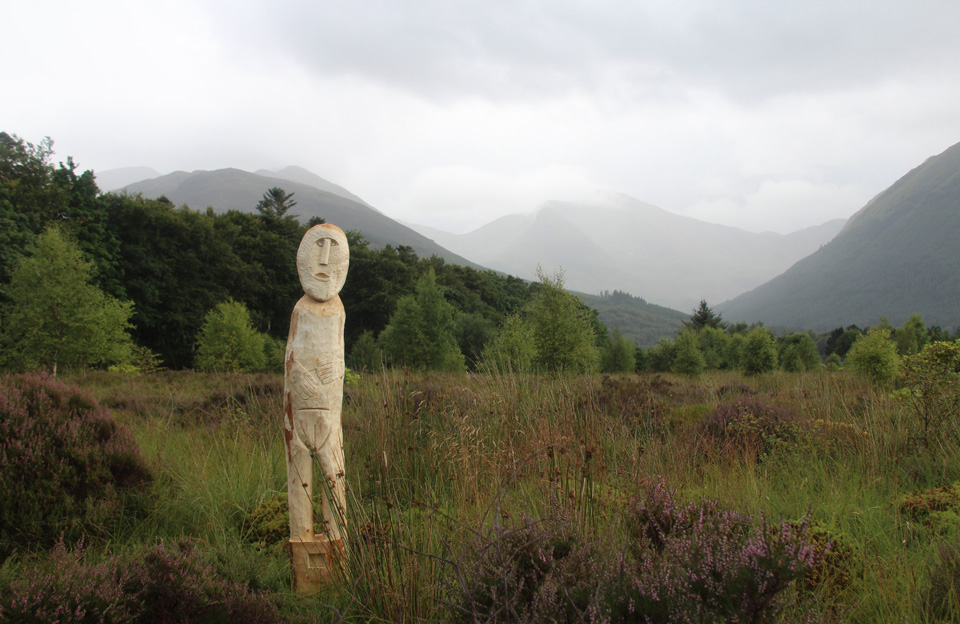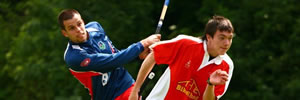

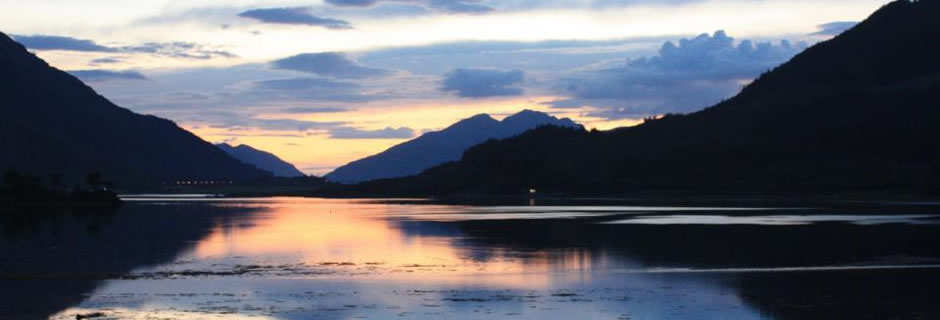
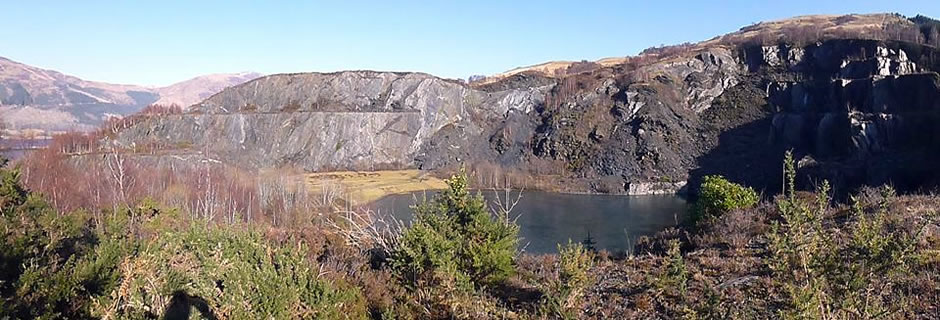

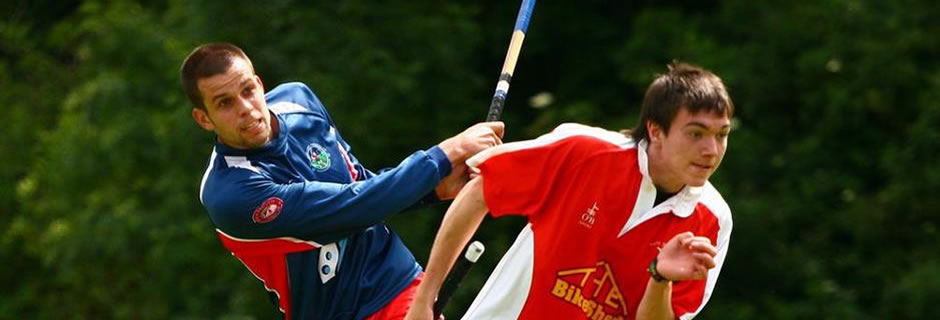
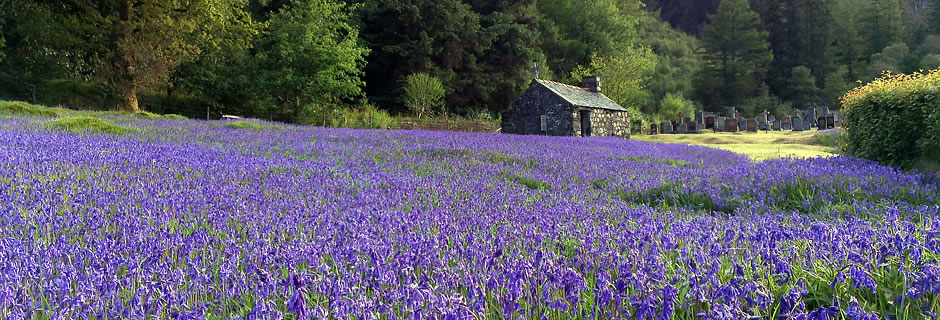
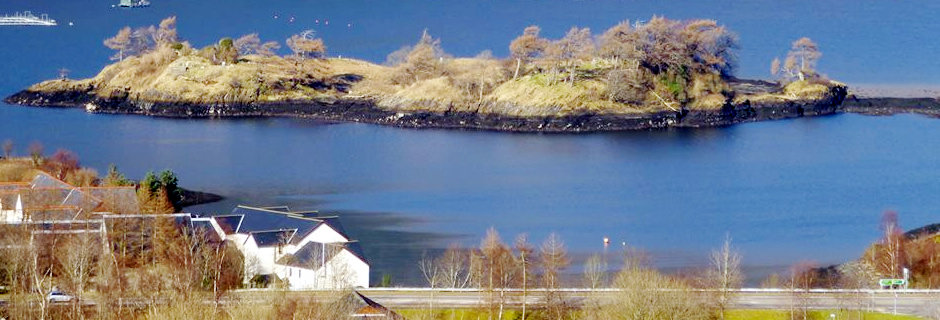
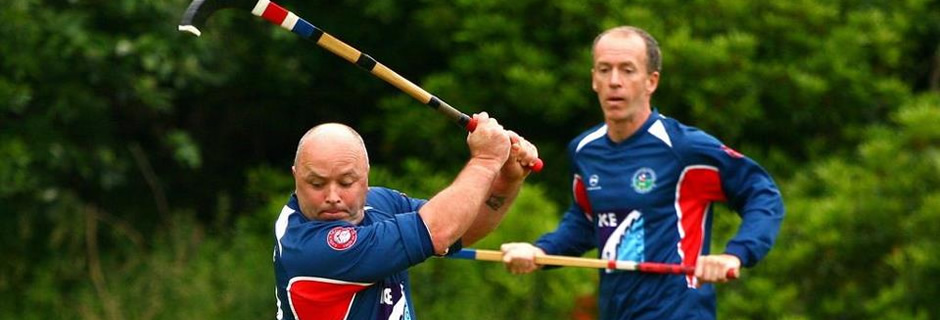
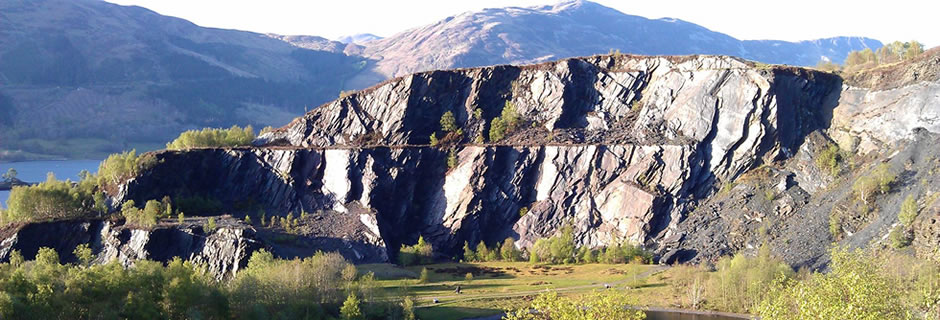








The Goddess Returns
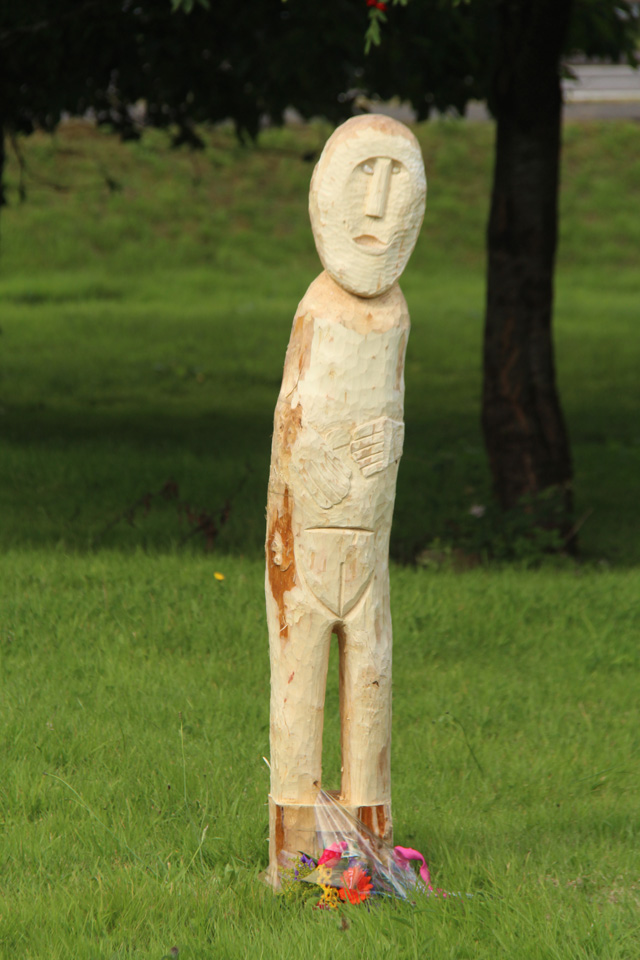 Although the figure known as the Ballachulish Goddess was found at Ballachulish Moss in North Ballachulish, the return took place on our side of the Loch.
Although the figure known as the Ballachulish Goddess was found at Ballachulish Moss in North Ballachulish, the return took place on our side of the Loch.
Originally found in November 1880 when workmen were digging trenches in the grounds of Alltschellach House, the enigmatic Ballachulish Goddess is believed to date from c600BC. Carved from Alder, it is unlikely that she was above ground for long, as evidenced by the good quality of the artefact when discovered. Sadly, preservation techniques were limited back then, and the Goddess was oiled to prevent cracking. It didn’t work, and the figure dried out, producing the strange warped shape that is now displayed in the museum in Edinburgh.
Link: Edinburgh Museum information
Whilst carved wooden figures have been found across north west Europe, the Ballachulish Goddess is the only one known from Scotland, making her rather special internationally, not just to the local area!
 In early 2017, Gavin MacGregor of Northlight Archaeology, an associate of the Pallas Boy Project, contacted our community to inquire about coming and carving a replica of the goddess in the area where she was found, using replica tools as part of their experimental archaeological work. Naturally we said yes, and so a few months later in early August, the team arrived. They included Dr Ben Gearey (centre left), the team leader; Orla Peach (left) who amongst other things has laser scanned the original, and the copy; Brian Mac Domhnaill (right) an Archeological photographer with special interest in Paleo-ecology; and most importantly Mark Griffiths (center right), a woodworker who has been working on restoring and recreating wooden artefacts, and was the carver of the new Goddess. On the Thursday evening they gave a very interesting talk about their work, and the Goddess, which included a debate about the various possible find sites that have been put forward over the years.
In early 2017, Gavin MacGregor of Northlight Archaeology, an associate of the Pallas Boy Project, contacted our community to inquire about coming and carving a replica of the goddess in the area where she was found, using replica tools as part of their experimental archaeological work. Naturally we said yes, and so a few months later in early August, the team arrived. They included Dr Ben Gearey (centre left), the team leader; Orla Peach (left) who amongst other things has laser scanned the original, and the copy; Brian Mac Domhnaill (right) an Archeological photographer with special interest in Paleo-ecology; and most importantly Mark Griffiths (center right), a woodworker who has been working on restoring and recreating wooden artefacts, and was the carver of the new Goddess. On the Thursday evening they gave a very interesting talk about their work, and the Goddess, which included a debate about the various possible find sites that have been put forward over the years.
 The hard work started on Friday, having sourced a piece of suitable timber the evening before from Kevin Smith’s garden. It was Birch rather than Alder, but a good substitute that was local and green, having been felled on Thursday evening. The progress made in one day was impressive, getting the shape of the goddess, and starting on some of the details. Mark had resorted to some modern tools for some of the work, in order to speed things up, but the replicas worked well. The team had many visitors over their two days, both locals and visitors coming in to see what was happening, checking on progress and both passing on local lore and asking questions, which the team were more than happy to answer.
The hard work started on Friday, having sourced a piece of suitable timber the evening before from Kevin Smith’s garden. It was Birch rather than Alder, but a good substitute that was local and green, having been felled on Thursday evening. The progress made in one day was impressive, getting the shape of the goddess, and starting on some of the details. Mark had resorted to some modern tools for some of the work, in order to speed things up, but the replicas worked well. The team had many visitors over their two days, both locals and visitors coming in to see what was happening, checking on progress and both passing on local lore and asking questions, which the team were more than happy to answer.


On the Saturday, the team discovered a mystery bunch of flowers outside the hall, presumably given as an offering to the goddess, and supplied by Glencoe Florist. The work continued and by lunchtime it was just the final details needing to be done. Bearing in mind that there is just a single photo of the goddess when she was found in 1880, it was somewhat difficult to decipher how the original had looked. However, the team discussed the work as it progressed, and their interpretation of the evidence from the photo seemed very plausible. By mid afternoon, it was the finishing touches, such as inserting the eyes, two pieces of quartz chosen from a selection supplied by locals and visitors who had been in to visit the project.
With the Goddess more or less complete, she was taken out onto the grass for some photos (above), before going on a little journey over to Ballachulish Moss. This is perhaps the first time that any 2500 year old Goddess had travelled in a car, so understandably she chose to travel incognito!
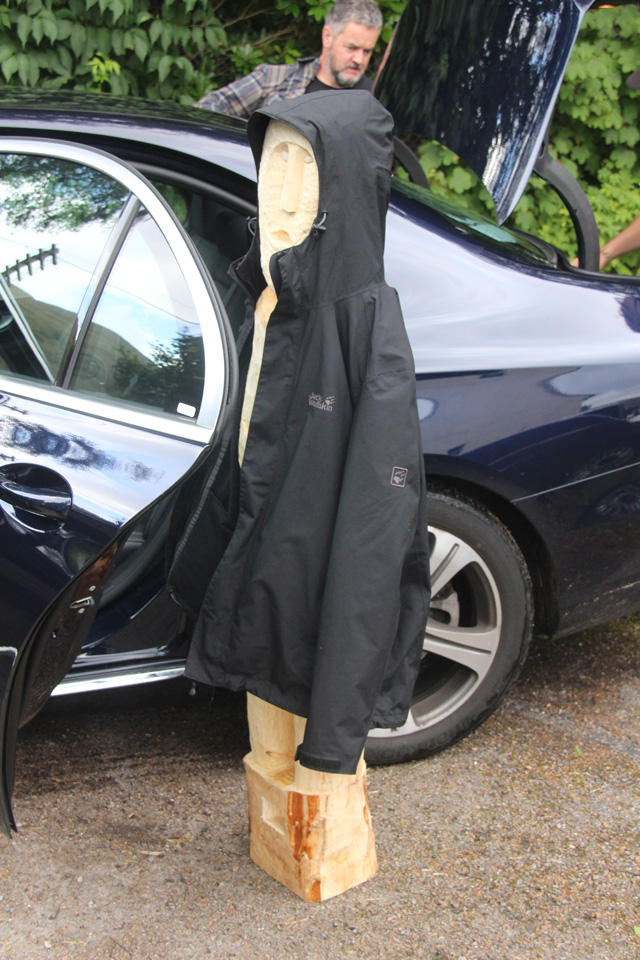
As noted above, the precise find site is uncertain, but the landscape of the moss has hardly changed in places since 1880, and perhaps not since the goddess was first buried in the peat 2500 years ago. Therefore, as well as visiting some of the possible locations, the Goddess also enjoyed a photo shoot on the nearby surviving open ground on the moss, giving an impression of the landscape she may have seen before being buried. Not only was there a brief shower, but the midges were out, no doubt making her feel at home! We will leave you to wonder at why she was created, and buried.
The Goddess is being left with the community. However, in order to preserve her and prevent the wood cracking and warping, she is being buried. It is hoped that the team will come back next year and dig her up, perhaps with the local schools present, so that we can see how she has fared.
